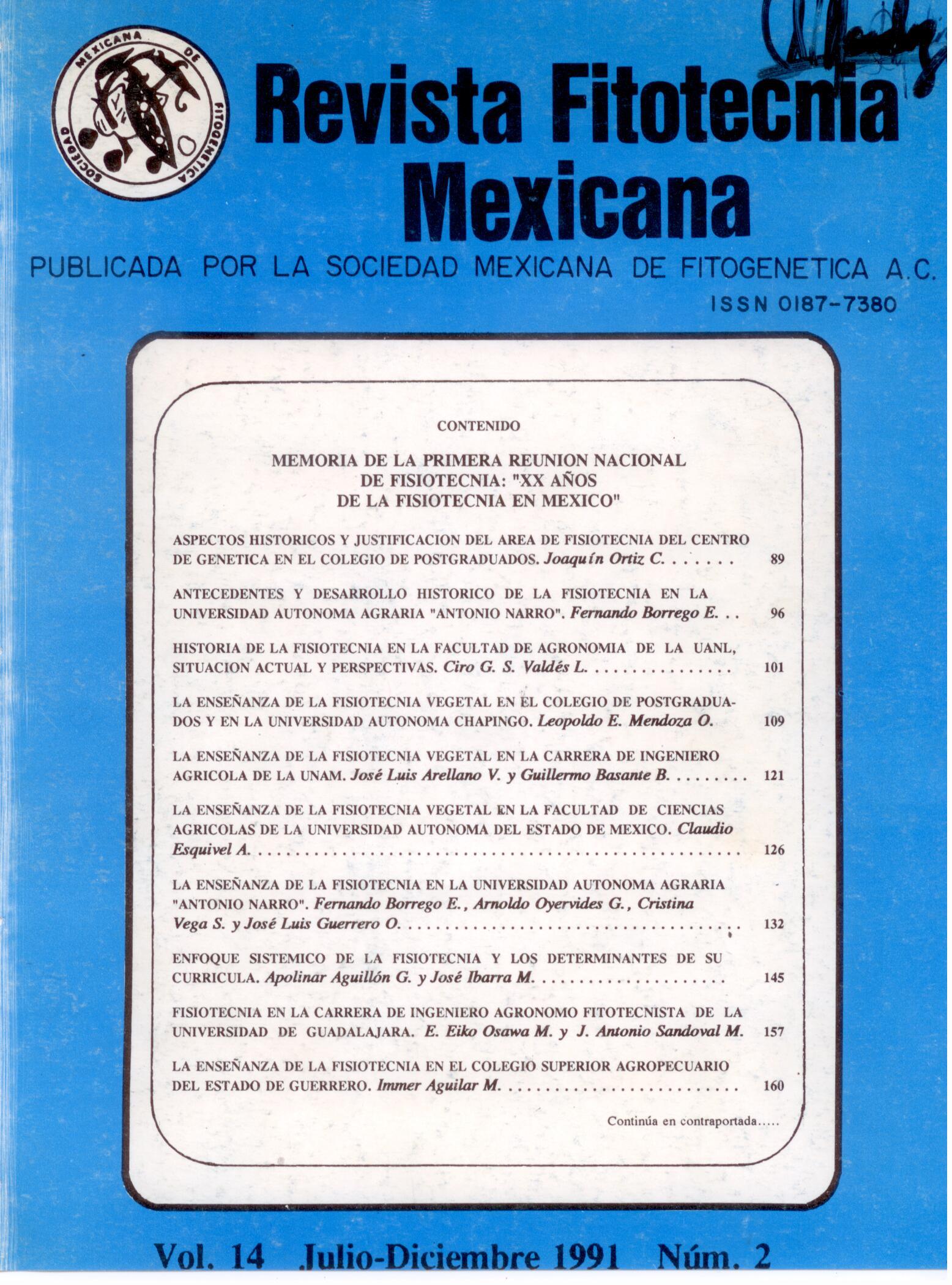PHYSIOTECHNICAL RESEARCH IN SEASONAL CORN IN AGUASCALIENTES
Main Article Content
Abstract
The importance of corn (Zea mays L.) in Mexico lies in the fact that it is the crop that occupies the largest planted area and is the fundamental basis of the diet of the Mexican people, especially in rural areas where its consumption exceeds 150 kg per year per year. capita and the stubble is used to maintain the free-range livestock that predominates in many agricultural regions. Corn in Mexico is grown from sea level to 3,500 m altitude, as occurs in some regions of the High Valleys of the Central Table, under a wide range of environmental and management conditions (Ortiz, 1990). In the Altiplano of the states of Durango, Zacatecas, Aguascalientes, San Luis Potosí, Jalisco and Guanajuato, whose elevations range from 1,900 to 2,100 meters above sea level, more than one million hectares of corn are planted under rainfed conditions. In these places, the low rainfall, the erratic distribution and the low moisture retention capacity of the soils limit the possibilities of harvesting grain by up to 70% (Luna and Zapata, 1988). This is, without a doubt, one of the regions where drought causes the most severe damage; However, corn continues to be the most planted crop. Within it, the INIFAP corn improvement program in Aguascalientes has chosen the town of El Llano for its excellent conditions to select genotypes with greater adaptation to drought. The objective of this work is to present some results of the physiotechnical research on rainfed corn carried out in the last 10 years by INIFAP in Aguascalientes in support of the production of rainfed corn in the Altiplano of Mexico.

